Neratinib Plus Capecitabine Versus Lapatinib Plus Capecitabine in HER2-Positive Metastatic Breast Cancer Previously Treated With ≥ 2 HER2-Directed Regimens: Phase III NALA Trial
- PMID: 32678716
- PMCID: PMC7499616
- DOI: 10.1200/JCO.20.00147
Neratinib Plus Capecitabine Versus Lapatinib Plus Capecitabine in HER2-Positive Metastatic Breast Cancer Previously Treated With ≥ 2 HER2-Directed Regimens: Phase III NALA Trial
Abstract
Purpose: NALA (ClinicalTrials.gov identifier: NCT01808573) is a randomized, active-controlled, phase III trial comparing neratinib, an irreversible pan-HER tyrosine kinase inhibitor (TKI), plus capecitabine (N+C) against lapatinib, a reversible dual TKI, plus capecitabine (L+C) in patients with centrally confirmed HER2-positive, metastatic breast cancer (MBC) with ≥ 2 previous HER2-directed MBC regimens.
Methods: Patients, including those with stable, asymptomatic CNS disease, were randomly assigned 1:1 to neratinib (240 mg once every day) plus capecitabine (750 mg/m2 twice a day 14 d/21 d) with loperamide prophylaxis, or to lapatinib (1,250 mg once every day) plus capecitabine (1,000 mg/m2 twice a day 14 d/21 d). Coprimary end points were centrally confirmed progression-free survival (PFS) and overall survival (OS). NALA was considered positive if either primary end point was met (α split between end points). Secondary end points were time to CNS disease intervention, investigator-assessed PFS, objective response rate (ORR), duration of response (DoR), clinical benefit rate, safety, and health-related quality of life (HRQoL).
Results: A total of 621 patients from 28 countries were randomly assigned (N+C, n = 307; L+C, n = 314). Centrally reviewed PFS was improved with N+C (hazard ratio [HR], 0.76; 95% CI, 0.63 to 0.93; stratified log-rank P = .0059). The OS HR was 0.88 (95% CI, 0.72 to 1.07; P = .2098). Fewer interventions for CNS disease occurred with N+C versus L+C (cumulative incidence, 22.8% v 29.2%; P = .043). ORRs were N+C 32.8% (95% CI, 27.1 to 38.9) and L+C 26.7% (95% CI, 21.5 to 32.4; P = .1201); median DoR was 8.5 versus 5.6 months, respectively (HR, 0.50; 95% CI, 0.33 to 0.74; P = .0004). The most common all-grade adverse events were diarrhea (N+C 83% v L+C 66%) and nausea (53% v 42%). Discontinuation rates and HRQoL were similar between groups.
Conclusion: N+C significantly improved PFS and time to intervention for CNS disease versus L+C. No new N+C safety signals were observed.
Figures
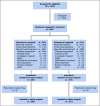


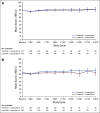
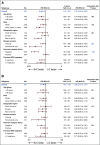
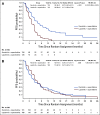

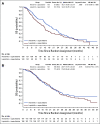
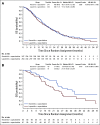

Comment in
-
Neratinib in HER2-Positive Breast Cancer With Brain Metastases.J Clin Oncol. 2021 Jan 20;39(3):251-252. doi: 10.1200/JCO.20.02385. Epub 2020 Dec 17. J Clin Oncol. 2021. PMID: 33332187 No abstract available.
-
Reply to T. J. A. Dekker, D.-C. Mo et al, and A. Seidman et al.J Clin Oncol. 2021 Jan 20;39(3):254-255. doi: 10.1200/JCO.20.02963. Epub 2020 Dec 17. J Clin Oncol. 2021. PMID: 33332192 No abstract available.
-
Comparative Effectiveness Research Needs to Consider Optimal Dosing and Scheduling.J Clin Oncol. 2021 Jan 20;39(3):253-254. doi: 10.1200/JCO.20.02355. Epub 2020 Dec 17. J Clin Oncol. 2021. PMID: 33332193 No abstract available.
-
Neratinib Plus Capecibine in Patients With HER2-Positive Metastatic Breast Cancer.J Clin Oncol. 2021 Jan 20;39(3):252-253. doi: 10.1200/JCO.20.02378. Epub 2020 Dec 17. J Clin Oncol. 2021. PMID: 33332194 No abstract available.
References
-
- National Comprehensive Cancer Network: Clinical practice guidelines in oncology: Breast cancer (version 2.2020), 2020. https://www.nccn.org/professionals/physician_gls/pdf/breast.pdf.
-
- Krop IE, Kim SB, Martin AG, et al. Trastuzumab emtansine versus treatment of physician’s choice in patients with previously treated HER2-positive metastatic breast cancer (TH3RESA): Final overall survival results from a randomised open-label phase 3 trial. Lancet Oncol. 2017;18:743–754. - PubMed
Publication types
MeSH terms
Substances
Associated data
LinkOut - more resources
Full Text Sources
Other Literature Sources
Medical
Research Materials
Miscellaneous

